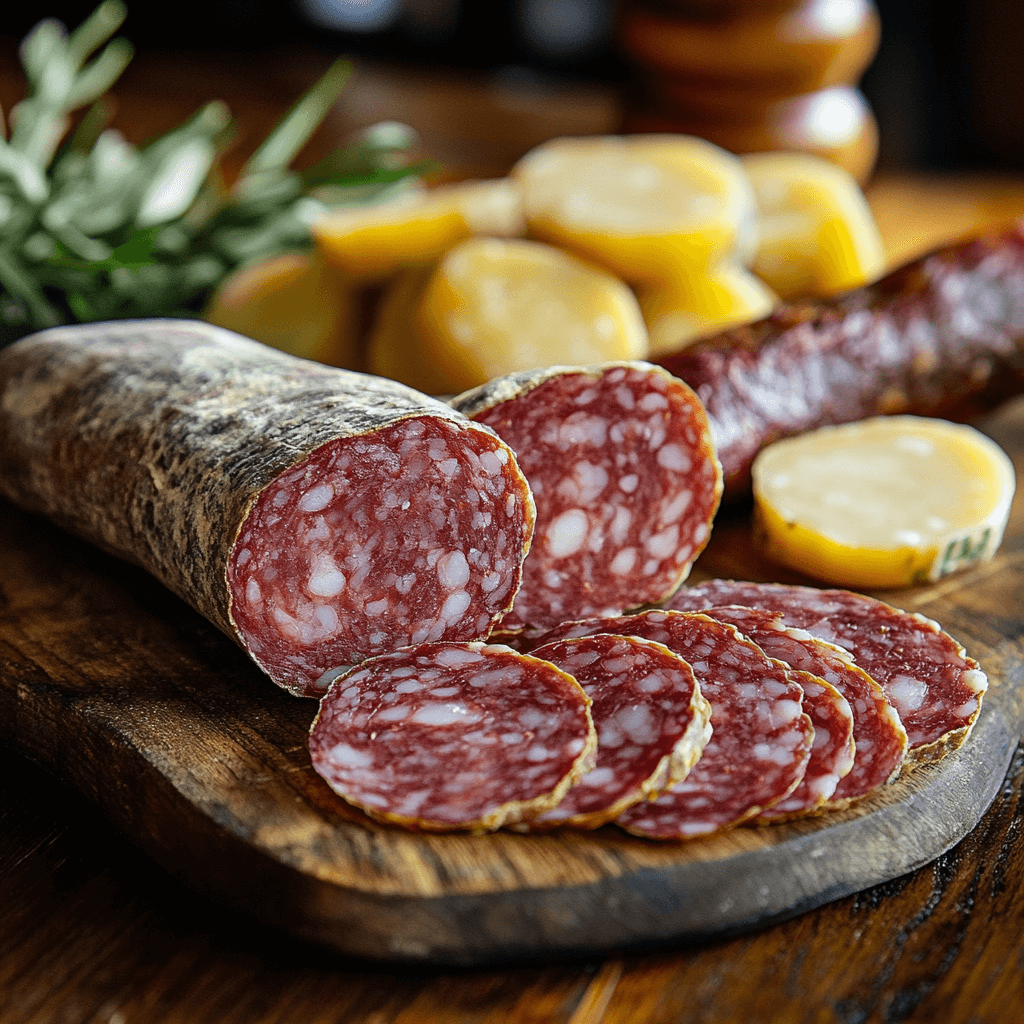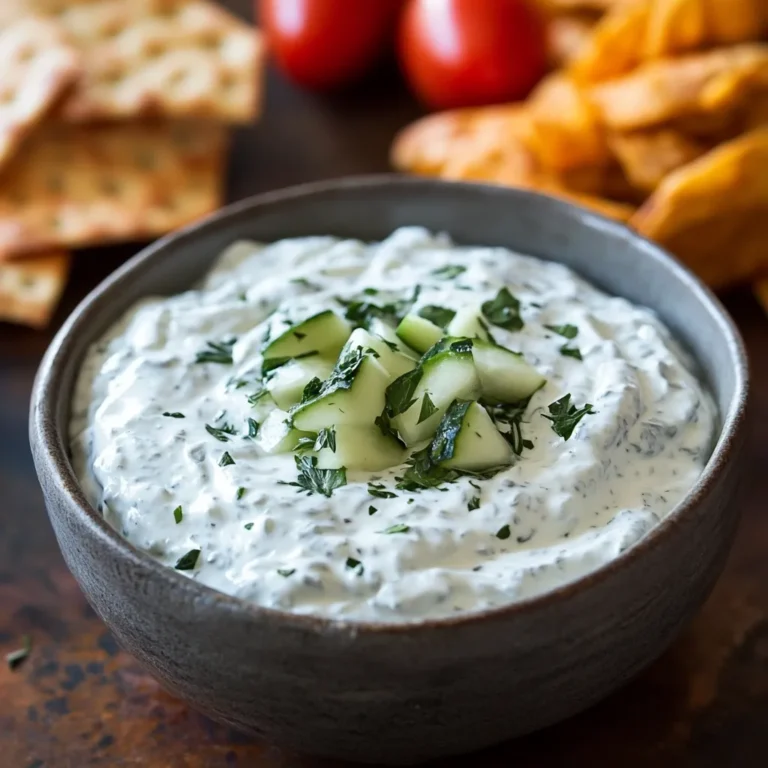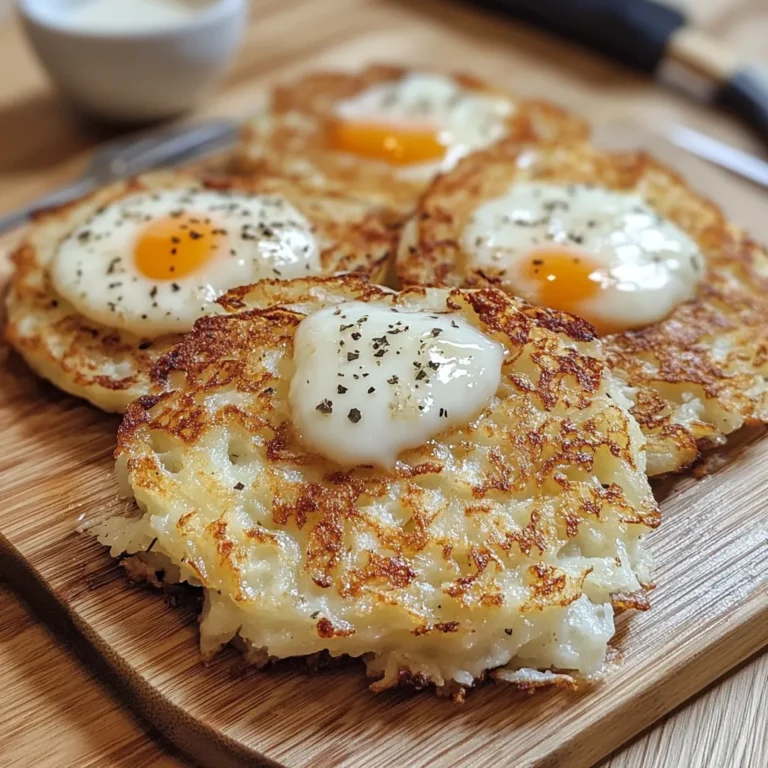Enjoy the Taste of Authentic Soppressata
Exploring Italian food for years, I’ve found nothing like the taste of real soppressata. This Italian cured meat is special. It has a rustic feel and strong spices, mixing old traditions with skill. Making it at home lets you enjoy that quality right in your kitchen.
Table of Contents
What Makes Soppressata a Treasured Italian Delicacy
Traditional soppressata is a beloved part of Italy’s food history. It’s more than just meat; it’s a family story passed down through generations. Let’s dive into what makes it so special.
The Rich Heritage of Traditional Soppressata
Coming from Southern Italy, soppressata has roots in Calabria. It was made by farmers using pork from their own farms. The name “soppressa” means pressed, showing how it’s made by hand and dried in the air.
For centuries, families kept this recipe alive. It became a symbol of Italy’s rustic traditions.
Distinguishing Soppressata from Other Italian Salamis
- Texture: Soppressata has a coarse, chunky texture, unlike smooth prosciutto.
- Flavor: It often has red pepper flakes or fennel, unlike the mild finocchiona or salty speck.
- Production: Unlike mass-produced salami, traditional soppressata is made in small batches, keeping its artisanal touch.
Regional Variations: From Calabria to Tuscany
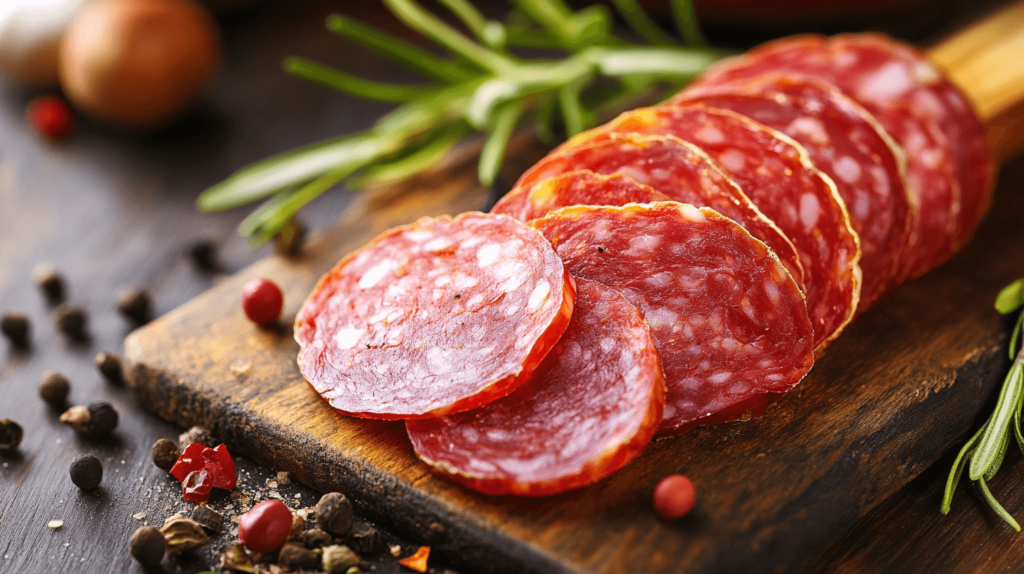
Calabrian soppressata is spicy with chili peppers. Tuscany’s version is milder, with garlic and herbs. Each region adds its own twist, showing soppressata’s adaptability.
These variations highlight why soppressata is more than just meat. It’s a reflection of Italy’s diverse culture.
My Journey with Authentic Soppressata
My first taste of authentic soppressata was in Calabria, given to me by my Nonna. It was warm and had a sharp yet balanced flavor. This taste connected me to Italy’s culinary heart. It sparked my desire to learn how to make it myself.
“Patience is the heart of artisanal soppressata,” Nonna Maria once told me. Her words echoed as I struggled to replicate her recipe stateside.
Trying to make it in my small kitchen was a challenge. I learned a lot:
- Local heritage-breed pork replaced Calabrian wild boar, but aging time doubled.
- Using a vacuum sealer mimicked mountain caves for fermentation.
- Adding fennel pollen (not seeds) preserved that signature authentic aroma.
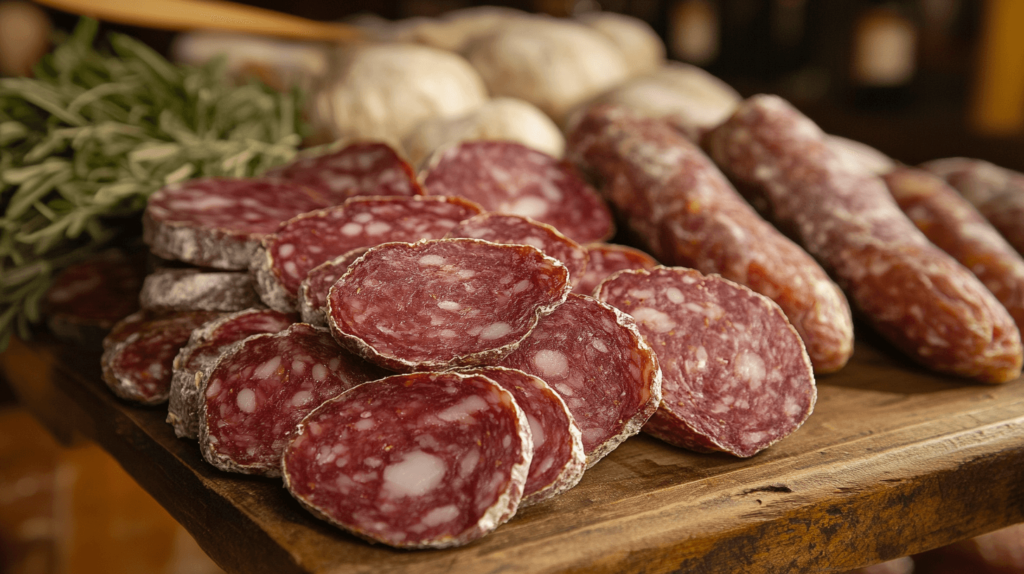
My big moment came when I mixed Nonna’s recipe with modern tools. A sous vide probe helped me control the curing temperature. Now, I teach others how to mix tradition with innovation. Every piece I make is a nod to that first slice, showing artisanal soppressata is more than meat—it’s a family story.
You don’t need an old cellar to start. Begin with quality pork, study the spice mix, and let your curiosity lead. The fun is in the making, not in being perfect.
Essential Ingredients for Homemade Soppressata Salami
Making authentic soppressata salami starts with the right ingredients. Every step, from picking meat to mixing spices, is key. Let’s look at what you need to make a traditional or spicy soppressata that’s as good as store-bought.
Selecting the Perfect Cuts of Pork
For traditional soppressata, the pork cut is critical. Use pork shoulder or neck for the best fat-to-lean ratio. Too much fat makes it greasy, too little makes it dry. Aim for 30-40% fat content. Avoid tenderloin, as it lacks the marbling for flavor.
- Pork shoulder (most popular choice)
- Neck (adds firm texture)
- Backstrap (for leaner variations)
Spice Blends That Define Soppressata’s Character
Spices turn ordinary meat into unforgettable traditional soppressata or bold spicy soppressata. Here’s how to balance flavors:
| Type | Key Spices | Flavor Profile |
|---|---|---|
| Traditional | Fennel, garlic, black pepper | Herbal, savory, subtle sweetness |
| Spicy | Red pepper flakes, paprika, cayenne | Fiery kick with layered heat |
Understanding Curing Salts and Their Role
Curing salt (like Morton Tender Quick) is essential—it preserves and seasons. Use it at 2-3% of the meat weight. Never skip it. A pro tip: dissolve it in water first for even mixing. Safety first: never eat uncured meat!
“Curing salt is the backbone of any great soppressata.” – Master Salumist, Joe Bianco
Equipment You’ll Need for Making Artisanal Soppressata
First, you need a strong meat grinder. I suggest the LEM Cast Aluminum Grinder for its solid build. It grinds meat evenly. For stuffing, a Butcher Buddy Stuffer makes it easier, but manual tools work too.
Next, choose between natural or synthetic casings. Tyson Collagen Casings are great for beginners. A digital scale is also key for precise flavor. I prefer the OXO Good Grips Scale for its accuracy.
For better results, consider a PolyScience Sous Vide for precise fermentation. Or, a Thermopro TP03 probe thermometer for temperature control. Here’s a quick guide:
| Tool | Purpose | Budget Pick | Premium Option |
|---|---|---|---|
| Meat Grinder | Chops meat evenly | West Bend Classic | LEM Cast Aluminum |
| Casing | Holds the shape | Farmland Collagen | Extra Long Sheep Intestines |
| Humidity Meter | Monitors curing conditions | AcuRite Digital | ThermoPro TP50 |
Quality tools are essential for the best soppressata. But, you don’t need to spend a lot. My first batches were made with half this list and were delicious. Focus on sharp knives, a clean workspace, and patience.
Step-by-Step Process to Create Your Own Soppressata
Making gourmet soppressata requires careful steps and patience. From grinding meat to fermentation, each step is key. Here’s how I make sure my soppressata is rich and authentic.
Preparing and Grinding the Meat
Begin with chilled pork shoulder at 38–40°F. Grind it twice through a 1/4-inch plate for a smooth texture. Remember, a sharp grinder helps avoid tearing the meat.
- Cut meat into 1-inch chunks before grinding.
- Keep equipment refrigerated until ready to grind.
Mixing the Perfect Spice Blend
I mix fennel, red pepper flakes, and garlic powder into a paste. Then, I blend it with the meat. This ensures the spices are evenly spread. But, avoid overmixing to keep the texture right.
Stuffing Techniques for Even Distribution
Use a manual stuffer to fill the meat into natural casing. Turn the casing every 6 inches to prevent air pockets. If it’s too loose, thin the mixture a bit.
The Critical Fermentation Stage
| Stage | Temperature | Humidity |
|---|---|---|
| Initial Fermentation | 55–60°F | 85–90% |
| Middle Stage | 58–62°F | 80–85% |
| Final Phase | 50–55°F | 70–75% |
Check pH levels every day. A reading below 5.2 means it’s ready. My first batch took 3 weeks, but it was worth the wait!
Note: Always wash your hands and tools before handling meat to avoid contamination.
The Art of Curing Your Gourmet Soppressata
Curing is where patience meets precision. After stuffing your meat, the next step turns it into true gourmet soppressata. My process starts with creating the perfect environment for curing.
Creating the Ideal Curing Environment
Whether you’re using a converted mini-fridge or a professional curing chamber, consistency is key. A small wine cooler works wonders for home setups. Avoid direct sunlight and drafts—these details ensure your artisanal soppressata develops its signature texture.
Monitoring Temperature and Humidity
Stick to these ranges to avoid spoilage:
| Stage | Temperature (°F) | Humidity (%) |
|---|---|---|
| Initial fermentation | 64–68 | 70–75 |
| Active drying | 55–60 | 60–65 |
Use a digital hygrometer—I recommend the AcuRite model for accuracy. Adjust with damp towels or dehumidifiers as needed.
How to Know When Your Soppressata Is Ready
- Check weight loss: Aim for 30–35% reduction
- Press the surface: It should spring back, not dent
- Sniff for a sharp, cured aroma—not raw pork
Mold? Light white or blue patches are normal. Gently scrub with vinegar and cloth—this is part of artisanal soppressata’s natural aging process.
Spicy vs. Sweet: Exploring Soppressata Variations
The debate between spicy soppressata and traditional soppressata is as lively as the dish itself. My travels through Italy’s culinary heartlands taught me how geography shapes flavor. Calabrian versions often lean spicy, infused with peperoncino, while Tuscany’s traditional soppressata balances herbs with a milder kick. But what defines the best soppressata is personal taste—and experimentation.
- Spicy Soppressata: Fiery varieties use red pepper flakes or chili oils, but the heat isn’t one-note. Aged garlic and fennel seeds add depth, preventing the burn from overwhelming.
- Sweet Soppressata: This style relies on natural sweetness from aged prosciutto cuts or a touch of wild fennel pollen. No sugar added—just slow curing to coax out savory-sweet notes.
“A great spicy soppressata should sing, not shout,” says Master Cured Meat Specialist Maria Rossi. “Balance is key.”
My favorite best soppressata blends both worlds. Try folding in a dash of honey during spice mixing for a smoky-sweet contrast. Or layer spicy soppressata with fig jam on a charcuterie board. Remember, there’s no wrong choice—only flavors waiting to be discovered.
Serving and Pairing the Best Soppressata
Learning how to serve the best soppressata brings out its best. It’s great on its own or in new dishes. Here’s how to make the most of it:
Wine Pairings That Complement Soppressata
- Full-bodied red wines like Primitivo or Sagrantino balance the authentic soppressata’s saltiness.
- For spicy versions, crisp whites like Vermentino cut the heat.
- My favorite? A bold Chianti with Calabrian-style soppressata.
Creating the Ultimate Charcuterie Board
Begin with aged cheeses like pecorino or gorgonzola. Add honeycomb, marinated olives, and rosemary focaccia. Place slices of best soppressata artfully. A reader once shared:
Pairing it with fig jam changed everything.
Cooking Applications Beyond Sliced Servings
Cooking turns authentic soppressata into exciting dishes:
- Chop into pasta sauces for umami depth
- Grill slices for pizza toppings
- Finely dice for bruschetta toasts
At gatherings, I love seeing guests try new things. Like crumbling it into risotto. Every bite is a story of tradition and creativity.
Conclusion
Making authentic soppressata is more than just a recipe. It’s a way to honor centuries of tradition. Every step, from picking pork to mixing spices, connects us to those who made it before us. The patience in curing turns simple ingredients into something amazing.
Quality ingredients and time are key. My experiments showed even small batches can be rewarding. The first time I tasted my homemade soppressata, I felt a connection to the past. That moment of pride is why this process is so rewarding.
If you want to try making soppressata, start small. Use trusted methods and let the curing process happen slowly. Trust your senses to guide you. Every attempt brings new insights, and even small mistakes are part of the story.
So, why wait? Making authentic soppressata is about the joy of creating something timeless. Your first try might not be perfect, but that’s part of the fun. Homemade soppressata is more than food; it’s a celebration of heritage and creativity. Roll up your sleeves and let this tradition become yours to savor and share.

